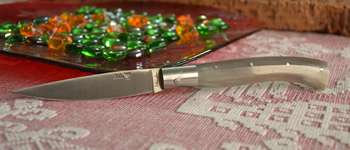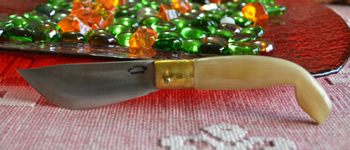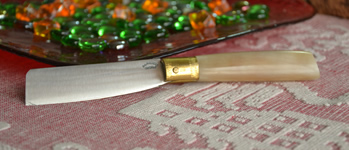The Sardinian knife history was born in Sardinia substantially with human activity. Flint and obsidian blades were found in the major sites nuragici, and skill in bronze working was one of the reasons for the success of Nuraghic for a millennium. With the advent of modern metallurgy in Sardinia are witnessing the development of leppa, which historically is used both as a weapon and as a tool for domestic activity. The blade called “leppa”, fixed and similar to that of a small sword, will be replaced in the late 800 and early 900 with the switchblade. In the different areas of Sardinia the switchblade is developed in a different way more as a form of the blade. The main types of Sardinian knife like switchblades are now being considered:

– Pattadese: utility knife switchblade, characterized by a slender blade, rather straight and sharp tip.
Also handle regular and straight in order to best accommodate the blade.
The shape of the handle, the most common mode is composed with two grips horn cattle and rivets and ring made of brass or steel.

– Arburesa: utility knife switchblade, characterized by a bulging blade and generally of larger dimensions of pattadese.
Handle often curved in order to best accommodate the blade.
Often, the handle is carved from a single piece of horn, or done in fine Sardinian juniper. The nut and bolt are generally made of brass or steel.

– Guspinesa: this particular jackknife has the free end of the blade tip.
In the first of this type of knife 900, however, very effective in cutting phase, it became very popular with the Giolitti law of 1908, which restricted considerably the port of knives.


